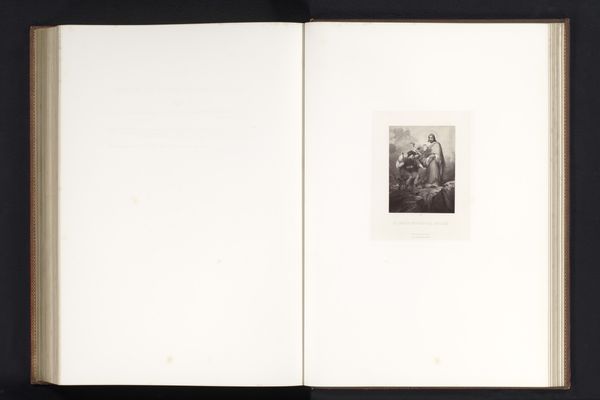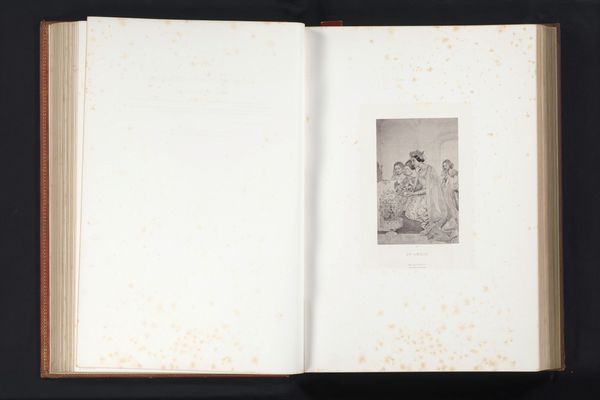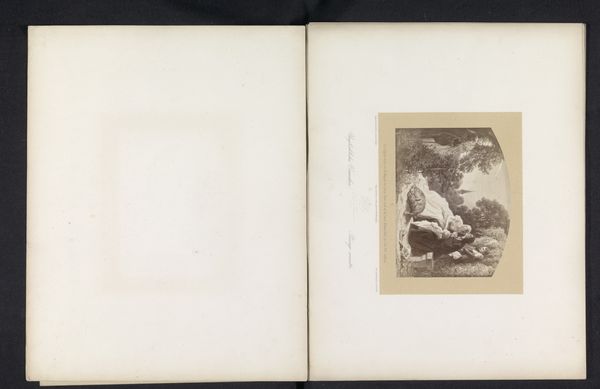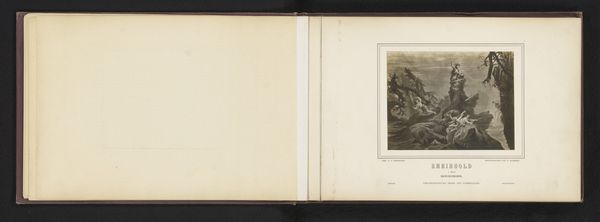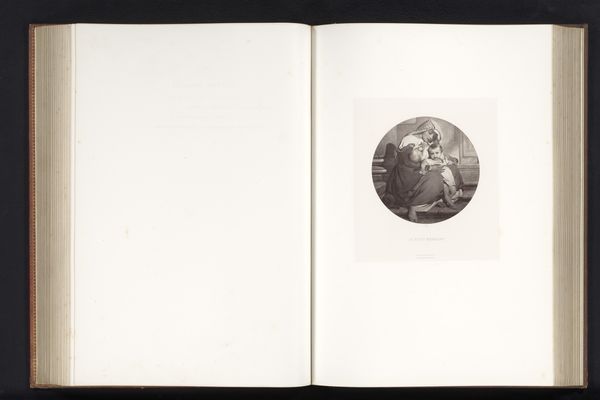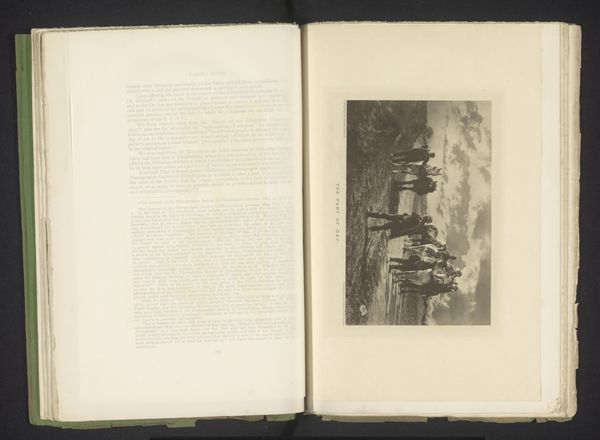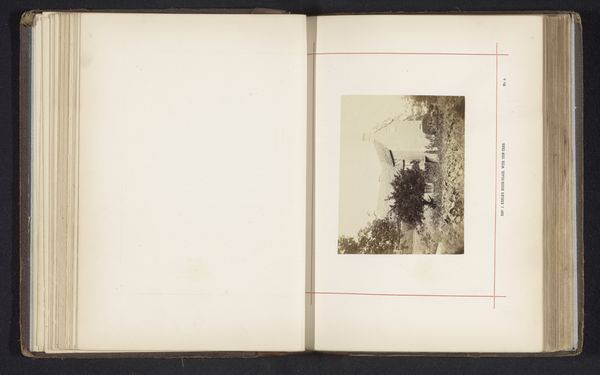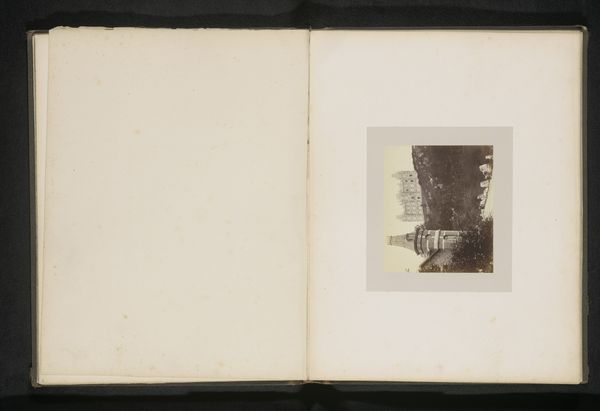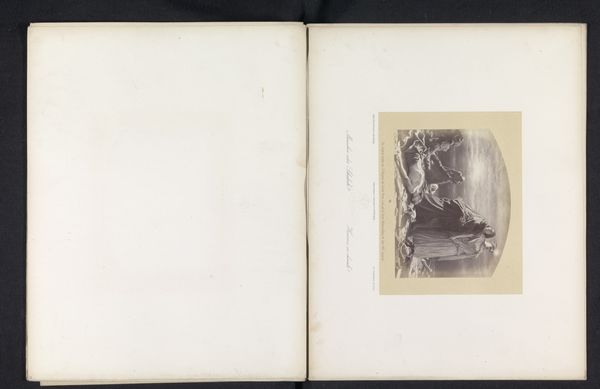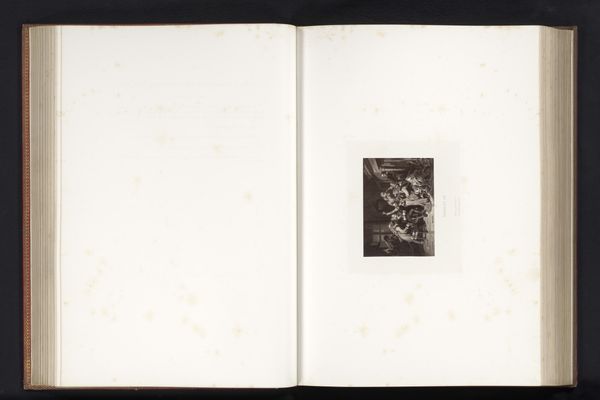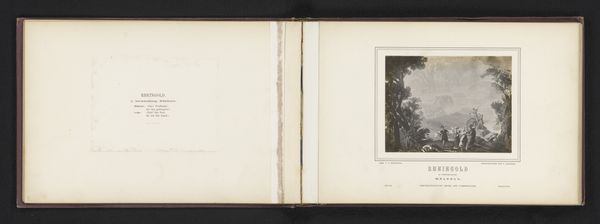
Fotoreproductie van een schilderij van Napoleon in de Alpen door Paul Delaroche before 1858
0:00
0:00
Dimensions: height 185 mm, width 140 mm, height 259 mm, width 200 mm
Copyright: Rijks Museum: Open Domain
Curator: Looking at this photo reproduction from before 1858, I am struck by its composition—a diminutive representation set amidst the vast expanse of the open book. Editor: Immediately, it evokes a feeling of faded grandeur, doesn't it? The grayscale photography and the open book format speak volumes about the means of production and consumption of this imagery in its time. Curator: Indeed. The work, titled 'Fotoreproductie van een schilderij van Napoleon in de Alpen door Paul Delaroche', presents a historical moment through the romantic lens of the original painting. Note how the subject, Napoleon, and his horse are centrally positioned, and light falls upon him. It certainly gives it a heroic aspect. Editor: The romantic idealization is obvious. However, consider the material reality. Photography enabled a broader distribution of Delaroche's vision. We see a democratization of imagery and also the birth of reproducible historical narratives that are influenced by technological means. Curator: It's a rather skillful reproduction, managing to capture the dynamism and drama of the original painting despite the obvious limitations of the early photographic techniques. There is a definite artistic intention there, aimed at communicating Delaroche's romantic idealization. Editor: Of course, but let's not forget the paper and chemicals, the printing press, and the darkroom that all had to function in sync in order to yield an object that now prompts discussion about painting's meaning and significance! Early photography changed the landscape of image production, offering new opportunities and creating new hierarchies. Curator: I find it fascinating how the composition uses a kind of 'mise en abyme' structure by placing an image within the frame of the open book. This strategy compels one to reflect on modes of representation and on how we perceive art and its history. Editor: Ultimately, this object isn't merely a window into a painting, but rather a reflection on image-making, distribution, labor, and our cultural fascination with a figure like Napoleon. Curator: Very well observed. Editor: And with those ideas in mind, let's explore the next work, shall we?
Comments
No comments
Be the first to comment and join the conversation on the ultimate creative platform.
